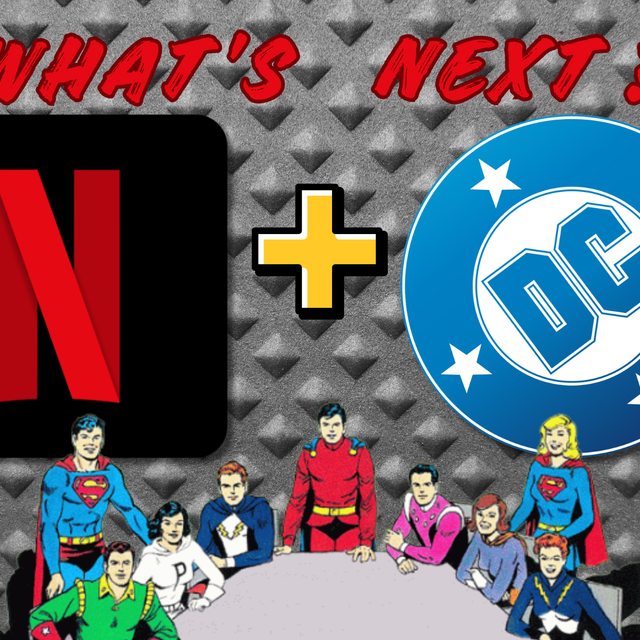
In this blog post I want to look at important comics connected to what the Marvel movies call ‘the quantum realm’. This quantum dimension in the MCU (due to copyright issues) is actually known as the ‘Microverse’ dimension in the comics.
Containing sub-systems, such as ‘Mita’ and ‘Sub-Atomica’, the Microverse has been heavily discussed recently due to speculation surrounding a potential key role it may play in the next Avengers movie.
What comics are connected to this aspect of the MCU?
Moreover, to begin, how on Mita does the Microverse relate to Thanos and the next Avengers movie? Well, by now, many reading this have probably seen the first trailer for ‘Avengers 4’ (i.e., ‘Avengers Endgame’). That trailer, you may recall, ended with a small (pun intended) surprise.
Scott Lang, back from the quantum realm wherein we saw him trapped at the end of his last movie ‘Ant-Man and the Wasp’ (2018), shows up at the Avengers compound. “Is this an old message?” Steve Rogers asks, “It’s the front door”, Black Widow replies.
To make a long story short, many MCU and comic book fans are convinced that beating the Mad Titan in the next Avengers movie will somehow involve the quantum realm and time travel.
To understand why, we need to know something about the history of the so-called Microverse.

Captain America Comics #25 (April 1943) – First Appearance of the Microverse
Originally, I thought the Microverse first appeared in the Silver Age run of the Fantastic Four. A bit of research proved that assumption wrong. The Microverse’s first appearance happened back in the Golden Age, in a Captain America story titled "The Princess in the Atom" (adapted by Ray Cummins with art by Harry Sahle and Syd Shores from an earlier 1919 sci-fi story called “The Girl in the Golden Atom,” by Ray Cummings). In CAC #25, Captain America and Bucky follow a tyrant named Togaro into the Microverse realm of Mita in order to rescue Dianna Ferrule, a girl held prisoner there. This Golden Age comic is the first time the Microverse appears in a Marvel related story - even if it is still in a Timely/Atlas publication.
Like all Golden Age Captain America this comic is difficult to find (only 40 on the CGC census) and expensive in high grade. A 9.4 sold way back in 2002 on Heritage for $8,050.00. It would be decades before the Microverse was mentioned again.


The second mention is indirect and occurs in Silver Age Fantastic Four, Fantastic Four #10 (January 1963), which is the first Silver Age mention of the Microverse, but it’s not until Fantastic Four #16 (July 1963) that we see it portrayed again in comics. Early on in the FF run (in issue #10), Doctor Doom returns to threaten our heroes and manages, through use of his diabolical genius, to switch bodies with Reed Richards. Impersonating Richards, he begins working on a ‘shrink ray’ that he plans to use to eliminate the FF. In the end, Reed manages to turn the shrink ray onto Doom himself. Originally, the FF thought Doom had perished from the effects of the shrink ray. In FF#16 we learn that Doom had been transported to the Microverse realm of Sub-Atomica which he quickly conquered. FF #16 is therefore a major Microverse key. In that issue the FF travel to the Microverse for the first time. The fact that this comic also features the first Ant-Man cross-over does nothing to downplay its significance for the next Avengers film. We know Ant-Man will show up there.
The biggest Microverse threat to the FF, showing up later in the Fantastic Four run, was probably Psycho-Man. First appearing in Fantastic Four Annual #5 (November 1967) , Psycho-Man was a mad scientist who governed a system of worlds within the Microverse and hated the FF. His first appearance is in this comic which features both a closer look at the Microverse as well as a Silver Surfer solo story. Worth checking out, especially given the penchant for FF books to take off in terms of prices these days. This one is, in many ways, an undervalued issue.

Marvel Preview #4 (January 1976) - The Time Travel Origins of the Microverse
Finally, the origins of the Microverse are completely connected to time travel, as is shown in this comic. This issue is currently popular as the first appearance of Star Lord. But in the current MCU Mr. Lord is literally dust. How does this comic connect to the Microverse? In it, we get the story of the origin of the Microverse and its creation by a time travelling future scientist named Wayfinder after he finds the Sword in the Star. This comic was trending down in sales in most grades, will its overlooked Microverse-related story reverse those trends?

The race of Microns are not only later said to be denizens of Sub-Atomica in the Microverse, but their history is traced directly to Prince Wayfinder and his use of the Sword in the Star on pre-historic Earth. Since the Micronauts originally came from the future and developed an advanced society in the Microverse, their story is essential to understanding the Microverse- larger MCU connections.
Finally, to conclude, here’s a guess at how all this will be significant to the plot of the next Avengers movie.
The quantum realm is important and time travel will be the missing factor. Since Scott was in the quantum realm/Microverse when the snap happened, and the quantum realm is connected to time travel (as Janet van Dyne, played by Michelle Pfeiffer, points out to Scott when she warns him to avoid getting sucked into a ‘time vortex’ when travelling to the world-between-worlds), Somehow, Scott will escape the Microverse that protected him (but not Hank and Janet) from Thanos’ snap and help the surviving Avengers travel back in time to undo Thanos’ genocide.
The above is just a guess, but we’ll all find out the real story on April 26 when 'Avengers: Endgame' is slated to hit theaters.



